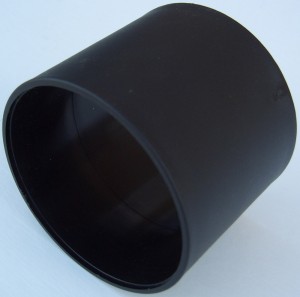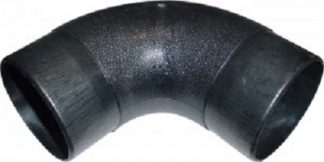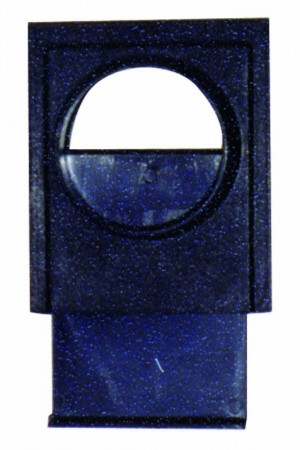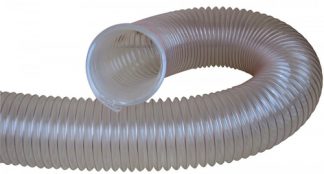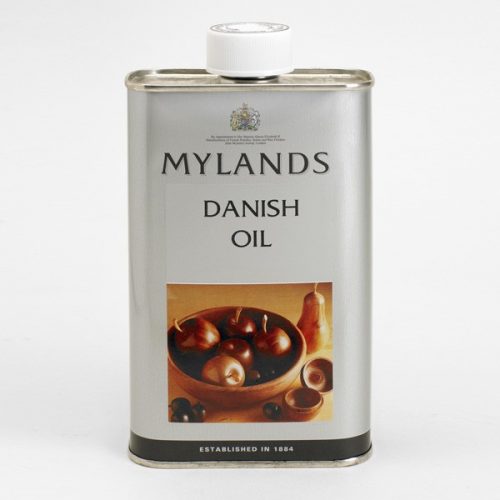-
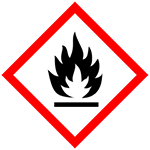
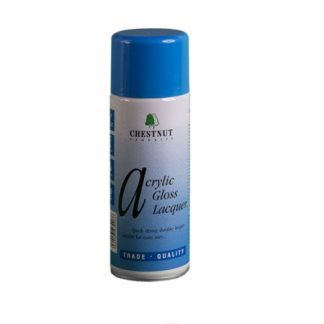
 If you don’t have access to spraying equipment, this aerosol lacquer will give you a great finish quickly and easily. A spray application is particularly relevant when trying to achieve the best gloss finish possible. Acrylic Gloss Lacquer is a high build water based lacquer specially adapted to give the best delivery through the nozzle (chosen to give excellent results without spitting, spotting or clogging in normal use) without, of course, the use of CFCs.
The lacquer itself dries quickly to give a high gloss finish straight from the can which has the benefit of being extremely hard wearing and durable – so much so that it can be used on items that will be kept outdoors or used in areas where moisture could damage other finishes.
Acrylic Gloss Lacquer is touch dry and tack free in around five minutes and hard dry in twenty minutes, ready for a second coat if needed after a light rubdown with a fine abrasive.
The sheen level can be increased if required by using Burnishing Cream (which will not affect the durability) or, after allowing 24 hours to ensure it is completely hard dry, by using it in conjunction with the Buffing Wheel Kit.
If you don’t have access to spraying equipment, this aerosol lacquer will give you a great finish quickly and easily. A spray application is particularly relevant when trying to achieve the best gloss finish possible. Acrylic Gloss Lacquer is a high build water based lacquer specially adapted to give the best delivery through the nozzle (chosen to give excellent results without spitting, spotting or clogging in normal use) without, of course, the use of CFCs.
The lacquer itself dries quickly to give a high gloss finish straight from the can which has the benefit of being extremely hard wearing and durable – so much so that it can be used on items that will be kept outdoors or used in areas where moisture could damage other finishes.
Acrylic Gloss Lacquer is touch dry and tack free in around five minutes and hard dry in twenty minutes, ready for a second coat if needed after a light rubdown with a fine abrasive.
The sheen level can be increased if required by using Burnishing Cream (which will not affect the durability) or, after allowing 24 hours to ensure it is completely hard dry, by using it in conjunction with the Buffing Wheel Kit.

-
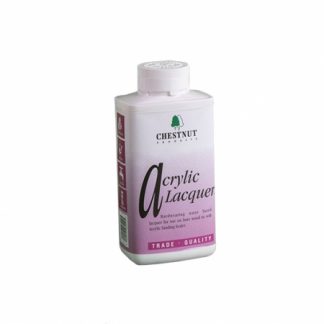
 If you need to get away from the smell and flammability of our cellulose based lacquers this is an ideal option.
This water based lacquer has virtually no smell and is totally non-flammable. Don’t be fooled though, this product is extremely hard wearing and gives a full gloss finish.
Being water based it is slightly slower drying, taking about twenty minutes to be touch dry. If you want to apply a second coat it should be left two hours before doing so, although a wax can be applied if required after about thirty minutes.
This product can be sprayed if suitable equipment is available, or can be applied by cloth or brush. We recommend foam brushes for application as this keeps the foaming action of acrylics to a minimum.
If you need to get away from the smell and flammability of our cellulose based lacquers this is an ideal option.
This water based lacquer has virtually no smell and is totally non-flammable. Don’t be fooled though, this product is extremely hard wearing and gives a full gloss finish.
Being water based it is slightly slower drying, taking about twenty minutes to be touch dry. If you want to apply a second coat it should be left two hours before doing so, although a wax can be applied if required after about thirty minutes.
This product can be sprayed if suitable equipment is available, or can be applied by cloth or brush. We recommend foam brushes for application as this keeps the foaming action of acrylics to a minimum.
-

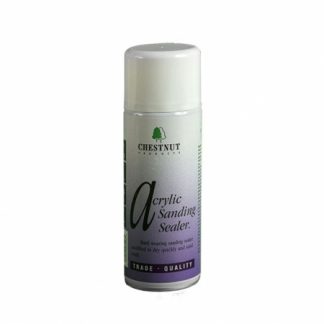
 It’s important to use a sanding sealer on most items; it gives a good foundation to your piece and can help the next coat to adhere properly to the timber.
Chestnut Acrylic Sanding Sealer does this perfectly and is designed to be used with Acrylic Gloss Lacquer, Acrylic Satin Lacquer, Ebonising Lacquer, any of their polishes and any of their waxes.
Supplied in an easy to use aerosol the dried coating complies with the EN71 Part 3 regulations governing toys and nursery furniture.
Once dried lightly sand back prior to applying your top coat.
It’s important to use a sanding sealer on most items; it gives a good foundation to your piece and can help the next coat to adhere properly to the timber.
Chestnut Acrylic Sanding Sealer does this perfectly and is designed to be used with Acrylic Gloss Lacquer, Acrylic Satin Lacquer, Ebonising Lacquer, any of their polishes and any of their waxes.
Supplied in an easy to use aerosol the dried coating complies with the EN71 Part 3 regulations governing toys and nursery furniture.
Once dried lightly sand back prior to applying your top coat.

-

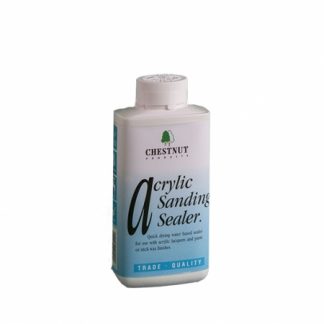
 This water based sanding sealer gets the job done without the smell associated with solvent based sealers and also with no flammability issues – ideal for asthma suffers and anyone with an aversion to solvent based finishes.
Applied by cloth, brush or spray (Chestnuts' foam brushes are especially good with this) the sealer dries in about 5 minutes and can be overcoated with most compatible finishes after about 20 minutes although two hours should be left if using Acrylic Lacquer.
Acrylic Sanding Sealer sands easily with a fine abrasive and is supplied ready for use.
This water based sanding sealer gets the job done without the smell associated with solvent based sealers and also with no flammability issues – ideal for asthma suffers and anyone with an aversion to solvent based finishes.
Applied by cloth, brush or spray (Chestnuts' foam brushes are especially good with this) the sealer dries in about 5 minutes and can be overcoated with most compatible finishes after about 20 minutes although two hours should be left if using Acrylic Lacquer.
Acrylic Sanding Sealer sands easily with a fine abrasive and is supplied ready for use.

-

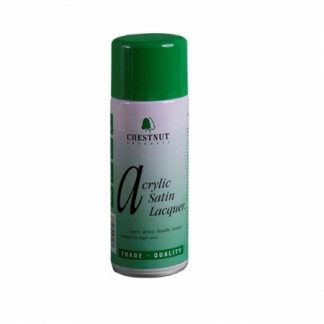
 When you need to protect your work but don’t want an overpowering shine on it, Acrylic Satin Lacquer is an ideal choice. With the benefit of an easy aerosol application, especially useful on awkward shapes, this is a hard wearing water based lacquer that will protect whatever it’s put onto, leaving an attractive satin sheen.
Acrylic Satin Lacquer is touch dry and dust free in about five minutes and hard dry about 20 minutes, ready for a second coat if needed after a light cut back with a fine abrasive.
For best results it should be used over either Cellulose Sanding Sealer or the Acrylic Sanding Sealer aerosol.
If you have a change of heart on the finish the lacquer can be brought to a gloss by using either Burnishing Cream or the Buffing Wheel Kit. Or you can simply apply a coat of Acrylic Gloss Lacquer!
When you need to protect your work but don’t want an overpowering shine on it, Acrylic Satin Lacquer is an ideal choice. With the benefit of an easy aerosol application, especially useful on awkward shapes, this is a hard wearing water based lacquer that will protect whatever it’s put onto, leaving an attractive satin sheen.
Acrylic Satin Lacquer is touch dry and dust free in about five minutes and hard dry about 20 minutes, ready for a second coat if needed after a light cut back with a fine abrasive.
For best results it should be used over either Cellulose Sanding Sealer or the Acrylic Sanding Sealer aerosol.
If you have a change of heart on the finish the lacquer can be brought to a gloss by using either Burnishing Cream or the Buffing Wheel Kit. Or you can simply apply a coat of Acrylic Gloss Lacquer!

-

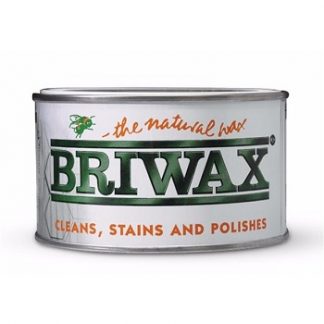 Briwax Original is formulated with fast drying, stronger solvents which speed up drying, and also increase the cleaning ability of the wax slightly. This means that it will renovate older dirtier furniture and leave you with the deep grain enriching Briwax shine. Unsealed wooden surfaces should be smooth, dry and clean. Apply Briwax using a lint free cloth or 0000 Steel Wool, thoroughly working the wax into the grain. Once dry, buff to desired finish with a clean soft cloth.
Briwax Original is formulated with fast drying, stronger solvents which speed up drying, and also increase the cleaning ability of the wax slightly. This means that it will renovate older dirtier furniture and leave you with the deep grain enriching Briwax shine. Unsealed wooden surfaces should be smooth, dry and clean. Apply Briwax using a lint free cloth or 0000 Steel Wool, thoroughly working the wax into the grain. Once dry, buff to desired finish with a clean soft cloth.
-
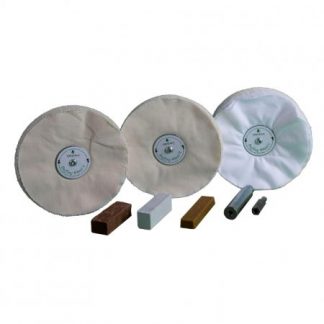 This kit gets you started on the road to buffing – all you need to supply is the lathe, a chuck and something to buff! Inside the kit you get the mandrels for holding the Buffing Wheels in the chuck. One of each buffing wheel (A, B and C) are included in the 8 inch size, complete with all the fixings attached to fit into the Mandrels. A bar of each of the compounds is included to get you started, these will last a long time so no need to worry about getting spares yet (although all of the items in the kit are available separately when you need to get them). Next is a stick of carnauba wax for that final gloss finish. Last but not least is a full set of instructions on how to use the kit to get the best from it.
This kit gets you started on the road to buffing – all you need to supply is the lathe, a chuck and something to buff! Inside the kit you get the mandrels for holding the Buffing Wheels in the chuck. One of each buffing wheel (A, B and C) are included in the 8 inch size, complete with all the fixings attached to fit into the Mandrels. A bar of each of the compounds is included to get you started, these will last a long time so no need to worry about getting spares yet (although all of the items in the kit are available separately when you need to get them). Next is a stick of carnauba wax for that final gloss finish. Last but not least is a full set of instructions on how to use the kit to get the best from it. -

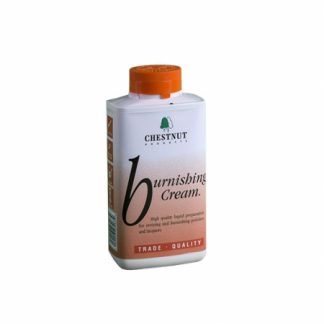 This creamy liquid has a very mild abrasive within it which acts like ‘liquid sandpaper’ on finished surfaces, cutting back and cleaning the finish and elevating it to a glossier, brighter finish. It can be used to smooth Cellulose Sanding Sealer prior to applying wax or Friction Polish, or, after allowing a suitable time to dry, on any of the lacquers, Friction Polish, Finishing Oil or Hard Wax Oil. A deep finish can be achieved using Burnishing Cream on a coat of Melamine Lacquer, then a coat of Friction Polish and finally the Burnishing Cream again. Use it sparingly so as not to over lubricate the surface and be sure to shake the bottle before use. It is not advisable to use a lacquer on top of a surface that has had Burnishing Cream used on it.
This creamy liquid has a very mild abrasive within it which acts like ‘liquid sandpaper’ on finished surfaces, cutting back and cleaning the finish and elevating it to a glossier, brighter finish. It can be used to smooth Cellulose Sanding Sealer prior to applying wax or Friction Polish, or, after allowing a suitable time to dry, on any of the lacquers, Friction Polish, Finishing Oil or Hard Wax Oil. A deep finish can be achieved using Burnishing Cream on a coat of Melamine Lacquer, then a coat of Friction Polish and finally the Burnishing Cream again. Use it sparingly so as not to over lubricate the surface and be sure to shake the bottle before use. It is not advisable to use a lacquer on top of a surface that has had Burnishing Cream used on it.
-
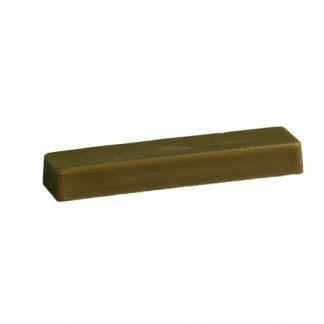 This is a solid block of carnauba wax, popular with woodturners. It gives a bright gloss finish and is also very hard wearing, able to withstand a medium amount of handling without showing finger marks. Apply over a sanding sealer by holding it against your work at it revolves on the lathe. Do not press too much – the wax is very hard and can scratch softer woods – the idea is to generate enough heat for the wax to melt slightly and transfer onto the wood. (This is easier than it sounds!). Use sparingly, and use the polishing process (using safety cloth) to ensure the wax is spread evenly. Buffing will produce a high gloss finish.
This is a solid block of carnauba wax, popular with woodturners. It gives a bright gloss finish and is also very hard wearing, able to withstand a medium amount of handling without showing finger marks. Apply over a sanding sealer by holding it against your work at it revolves on the lathe. Do not press too much – the wax is very hard and can scratch softer woods – the idea is to generate enough heat for the wax to melt slightly and transfer onto the wood. (This is easier than it sounds!). Use sparingly, and use the polishing process (using safety cloth) to ensure the wax is spread evenly. Buffing will produce a high gloss finish. -

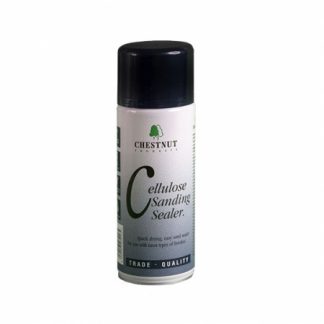
 Getting a good base for your finishing is essential when you want to get a great finish. Sometimes the piece you’re working on makes that more difficult due to its shape or size or for many other reasons.
Or sometimes you just want a quicker, cleaner method of applying a sealer.
That’s where Cellulose Sanding Sealer in an aerosol comes into its own. Basically the same product as in the tin, it has all the same benefits of quick drying and universal compatibility, it also has the added advantage of being easier both to apply and to get an even coating.
Use it before applying waxes, lacquers and polishes for a more durable final finish.
Getting a good base for your finishing is essential when you want to get a great finish. Sometimes the piece you’re working on makes that more difficult due to its shape or size or for many other reasons.
Or sometimes you just want a quicker, cleaner method of applying a sealer.
That’s where Cellulose Sanding Sealer in an aerosol comes into its own. Basically the same product as in the tin, it has all the same benefits of quick drying and universal compatibility, it also has the added advantage of being easier both to apply and to get an even coating.
Use it before applying waxes, lacquers and polishes for a more durable final finish.

-

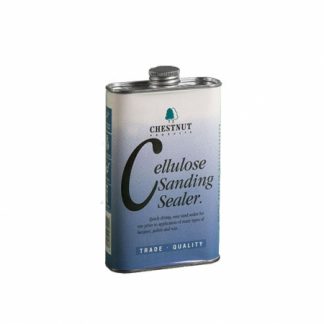
 Good finishing requires a good foundation, and Cellulose Sanding Sealer is probably the best way of providing one. Compatible with everything in the Chestnut Products range that benefits from the use of a sanding sealer (which is pretty much everything apart from oil finishes!) it is superbly universal.
The purpose of a sanding sealer is manifold.
Good finishing requires a good foundation, and Cellulose Sanding Sealer is probably the best way of providing one. Compatible with everything in the Chestnut Products range that benefits from the use of a sanding sealer (which is pretty much everything apart from oil finishes!) it is superbly universal.
The purpose of a sanding sealer is manifold.
- It seals the open pores of the timber prior to the application of the next coat, meaning that more of it stays on the surface and less of the finish is needed. Not only does this make it economical, when finishing the thinner the applied coat the less likely it is to get damaged, so a sanding sealer will help the top coats be more resilient.
- Sanding Sealers also bind the loose fibres of the timber together giving a more solid foundation for the next coat, which helps make sure the final finish is able to adhere properly and thus be more durable.
- They also include a sanding agent which acts as a lubricant to make the sanding process easier – the sanding agent also stands slightly proud of the surface of the sealer and it is this that is denibbed – the sealer itself should still be intact after sanding.

-

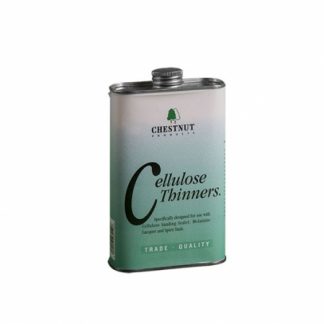 This pure cellulose solvent is a high quality dilutant for our cellulose based products, such as Cellulose Sanding Sealer and Melamine Lacquer. Thinning these products can help to make them easier to apply, especially over larger areas as it helps them flow out. Cellulose Thinners is also useful for cleaning any spills you may have in the workshop and is strong enough to help clean most things, taking care to ensure that it does not attack It can also be used to thin Spirit Stain to give a delicate wash effects, although spirit thinners is the better option for this.
This pure cellulose solvent is a high quality dilutant for our cellulose based products, such as Cellulose Sanding Sealer and Melamine Lacquer. Thinning these products can help to make them easier to apply, especially over larger areas as it helps them flow out. Cellulose Thinners is also useful for cleaning any spills you may have in the workshop and is strong enough to help clean most things, taking care to ensure that it does not attack It can also be used to thin Spirit Stain to give a delicate wash effects, although spirit thinners is the better option for this.
-
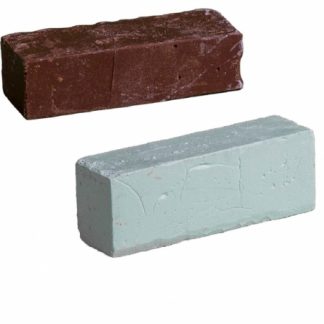 These compounds are designed to co-ordinate with the cloth used in the Buffing Wheels and Dome Buffs to give an exceptional cut and prepare the surface to a very smooth finish prior to using wax. Compound 1 -the brown one – (sometimes referred to as tripoli) is used with the ‘A’ Wheel/Dome to help smooth the applied finish. Avoid overloading the wheel/dome where possible to prevent a build up of the compound. If this happens it can be removed by either washing in soapy water or abrading the edge of the wheel with a coarse abrasive. Do not use on very open grained light coloured timber as the compound can get lodged in the grain and colour the piece. Compound 2 – the white one – (sometimes referred to as white diamond) acts as a cleanser to remove any traces of Compound 1 left on the surface (but not from the grain) and also has a very fine abrasive contained in it which smooths the work, leaving a semi-gloss finish and a superb foundation for the top coat of wax. Use Compound 2 sparingly, too much on the wheel will result in smears on the surface of your work which can be removed with buffing but this can be very time consuming and frustrating. It’s always best to apply a little and add more if needed.
These compounds are designed to co-ordinate with the cloth used in the Buffing Wheels and Dome Buffs to give an exceptional cut and prepare the surface to a very smooth finish prior to using wax. Compound 1 -the brown one – (sometimes referred to as tripoli) is used with the ‘A’ Wheel/Dome to help smooth the applied finish. Avoid overloading the wheel/dome where possible to prevent a build up of the compound. If this happens it can be removed by either washing in soapy water or abrading the edge of the wheel with a coarse abrasive. Do not use on very open grained light coloured timber as the compound can get lodged in the grain and colour the piece. Compound 2 – the white one – (sometimes referred to as white diamond) acts as a cleanser to remove any traces of Compound 1 left on the surface (but not from the grain) and also has a very fine abrasive contained in it which smooths the work, leaving a semi-gloss finish and a superb foundation for the top coat of wax. Use Compound 2 sparingly, too much on the wheel will result in smears on the surface of your work which can be removed with buffing but this can be very time consuming and frustrating. It’s always best to apply a little and add more if needed. -
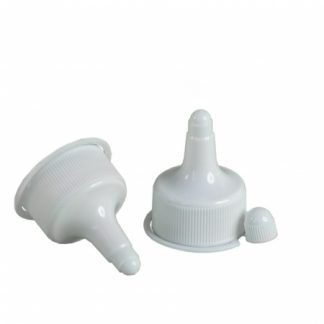 These Dispensing Nozzles are, in fact, almost indispensable! They fit onto any of Chestnuts' plastic bottles in the 250ml, 500ml and 1 ltr sizes, simply replacing the existing cap. Cut the tip off to the size you want and use the handy cover to reseal them when not in use. A useful by product of using these is that if you knock a bottle over the amount you lose through the small nozzle will be much less than without it. Just don’t forget to take the nozzle off the bottle before you throw it away so that you can re-use it! These nozzles are not child resistant, the correct closure should be replaced when the product is not in use.
These Dispensing Nozzles are, in fact, almost indispensable! They fit onto any of Chestnuts' plastic bottles in the 250ml, 500ml and 1 ltr sizes, simply replacing the existing cap. Cut the tip off to the size you want and use the handy cover to reseal them when not in use. A useful by product of using these is that if you knock a bottle over the amount you lose through the small nozzle will be much less than without it. Just don’t forget to take the nozzle off the bottle before you throw it away so that you can re-use it! These nozzles are not child resistant, the correct closure should be replaced when the product is not in use. -
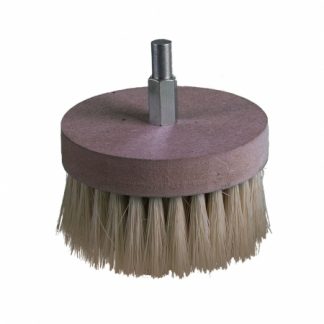 Chestnut Drill Polishing Brush has natural bristles that might seem a little harsh for polishing waxes but in fact are ideal for the task. Chestnut Drill Polishing Brush, which fits any electric drill or can also be used with the Buffing Wheel System, will give a higher gloss and more resilient finish to any waxed piece. In use, the bristles splay out in a mushroom shape, making this brush ideal for polishing spindles and cylinders. It can be used on flat surfaces but is prone to leave rings so the drum brush or dome brush are recommended for this application. The stock of the brush is about 10cm and the bristles are 4cm long. If the bristles of the brush become clogged with wax simply wash it in warm soapy water and allow to dry before use.
Chestnut Drill Polishing Brush has natural bristles that might seem a little harsh for polishing waxes but in fact are ideal for the task. Chestnut Drill Polishing Brush, which fits any electric drill or can also be used with the Buffing Wheel System, will give a higher gloss and more resilient finish to any waxed piece. In use, the bristles splay out in a mushroom shape, making this brush ideal for polishing spindles and cylinders. It can be used on flat surfaces but is prone to leave rings so the drum brush or dome brush are recommended for this application. The stock of the brush is about 10cm and the bristles are 4cm long. If the bristles of the brush become clogged with wax simply wash it in warm soapy water and allow to dry before use. -

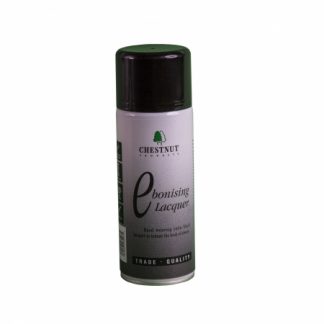
 Ebonising Lacquer is a tough, hard-wearing water-based lacquer. It is heavily pigmented so that when it is dry it emulates the classic satin look of ebony.
Usually applied over a sanding sealer (either Cellulose Sanding Sealer or Acrylic Sanding Sealer aerosol) it is touch dry in about five minutes and hard dry after twenty minutes.
Although heavily pigmented it is not paint and will still allow the grain of the timber to show through, rather than obliterating it completely.
Liming Wax and Gilt Cream can be applied over Ebonising Lacquer to give a pleasing, eye-catching yet very simple artistic effect.
If a bright gloss finish is required from Ebonising Lacquer this is best achieved by using Burnishing Cream on the lacquer with will polish it up to a high gloss.
Acrylic Gloss Lacquer can also be applied on top of Ebonising Lacquer, as can WoodWax 22 and Microcrystalline Wax.
Ebonising Lacquer is a tough, hard-wearing water-based lacquer. It is heavily pigmented so that when it is dry it emulates the classic satin look of ebony.
Usually applied over a sanding sealer (either Cellulose Sanding Sealer or Acrylic Sanding Sealer aerosol) it is touch dry in about five minutes and hard dry after twenty minutes.
Although heavily pigmented it is not paint and will still allow the grain of the timber to show through, rather than obliterating it completely.
Liming Wax and Gilt Cream can be applied over Ebonising Lacquer to give a pleasing, eye-catching yet very simple artistic effect.
If a bright gloss finish is required from Ebonising Lacquer this is best achieved by using Burnishing Cream on the lacquer with will polish it up to a high gloss.
Acrylic Gloss Lacquer can also be applied on top of Ebonising Lacquer, as can WoodWax 22 and Microcrystalline Wax.

-

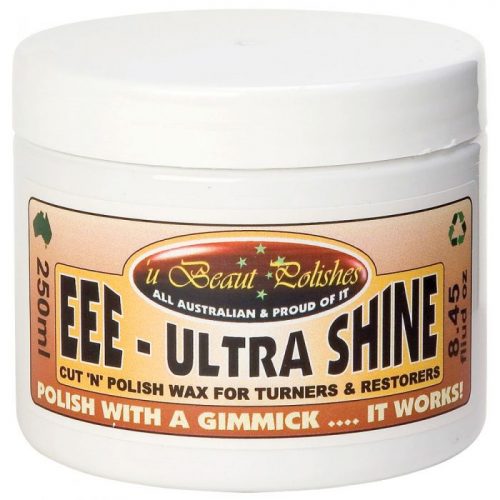 This amazing product is a cut and polish paste containing Tripoli powder, an ultra-fine abrasive. The polish is designed to be used in conjunction with Shellawax Cream and liquid formulations or as a finish in its own right on plastics (such as acrylic, resin-impregnated burr, crushed velvet, artificial ivory and similar products used for pen bodies). It can also be used after French polishing and restorers will find it useful to cut and revive previously polished surfaces. Although designed to be used directly on raw timber, bear in mind that EEE is not a finish in itself and the polished surface will need protecting by the use of some other product (such as Shellawax). EEE-Ultra Shine can be used over many other finishes such as oils and most types of varnish, enhancing the surface and giving it a smoothness and lustre with an ease that you would never have thought possible.
This amazing product is a cut and polish paste containing Tripoli powder, an ultra-fine abrasive. The polish is designed to be used in conjunction with Shellawax Cream and liquid formulations or as a finish in its own right on plastics (such as acrylic, resin-impregnated burr, crushed velvet, artificial ivory and similar products used for pen bodies). It can also be used after French polishing and restorers will find it useful to cut and revive previously polished surfaces. Although designed to be used directly on raw timber, bear in mind that EEE is not a finish in itself and the polished surface will need protecting by the use of some other product (such as Shellawax). EEE-Ultra Shine can be used over many other finishes such as oils and most types of varnish, enhancing the surface and giving it a smoothness and lustre with an ease that you would never have thought possible.
-
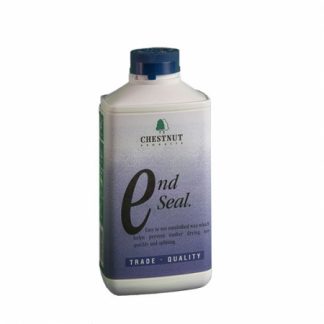 End Seal is an emulsified paraffin wax used the seal the ends of freshly cut timber to slow down the drying process and reduce the risk of the timber splitting. It can also be used on work-in-progress that is being left unfinished where there is a risk of the timber splitting. Apply it liberally, normally by brush but it can be sprayed if needed, usually to the smallest surface of the timber which will normally be the end grain where moisture is most likely to escape from. Sealing the surface will encourage the moisture to escape via the larger areas which will result in a slower exit.
End Seal is an emulsified paraffin wax used the seal the ends of freshly cut timber to slow down the drying process and reduce the risk of the timber splitting. It can also be used on work-in-progress that is being left unfinished where there is a risk of the timber splitting. Apply it liberally, normally by brush but it can be sprayed if needed, usually to the smallest surface of the timber which will normally be the end grain where moisture is most likely to escape from. Sealing the surface will encourage the moisture to escape via the larger areas which will result in a slower exit. -

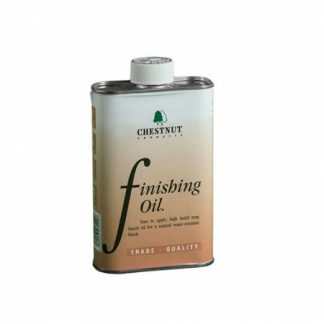
 Chestnut Finishing Oil is Chestnuts' version of Danish Oil* and uses Tung Oil as its base but with the addition of solvents and driers. This aids the drying of the product and speeds it up dramatically, so that it’s dry within eight hours. It has a pale amber colour and dries to a hard yet flexible film which is very hardwearing and water resistant.
For a high gloss finish apply several coats with a light rub down between coats; after 5 or 6 coats a good sheen should be visible.
Finishing Oil is normally applied by cloth but on larger areas a brush can be used very successfully.
Chestnut Finishing Oil is Chestnuts' version of Danish Oil* and uses Tung Oil as its base but with the addition of solvents and driers. This aids the drying of the product and speeds it up dramatically, so that it’s dry within eight hours. It has a pale amber colour and dries to a hard yet flexible film which is very hardwearing and water resistant.
For a high gloss finish apply several coats with a light rub down between coats; after 5 or 6 coats a good sheen should be visible.
Finishing Oil is normally applied by cloth but on larger areas a brush can be used very successfully.

-
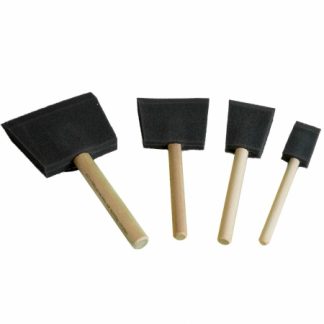 Made in the USA, these are the original and best quality Foam Brush. Manufactured using a special foam with a stiffener inside to make sure they keep their shape in use, and supplied with a solid wooden handle attached. Great for eliminating brush marks (no bristles = no brush marks) and there’s no danger of any stray bristles coming loose and spoiling your work. Priced to be semi-disposable they will normally wash out several times for re-use. Fantastic for applying acrylic finishes which have a tendency to froth up when applied by brush – the Foam Brush virtually eliminates this completely. Can also be used for painting, particularly gloss paints, seasoned users have been known to have a brush in each hand!
Made in the USA, these are the original and best quality Foam Brush. Manufactured using a special foam with a stiffener inside to make sure they keep their shape in use, and supplied with a solid wooden handle attached. Great for eliminating brush marks (no bristles = no brush marks) and there’s no danger of any stray bristles coming loose and spoiling your work. Priced to be semi-disposable they will normally wash out several times for re-use. Fantastic for applying acrylic finishes which have a tendency to froth up when applied by brush – the Foam Brush virtually eliminates this completely. Can also be used for painting, particularly gloss paints, seasoned users have been known to have a brush in each hand! -

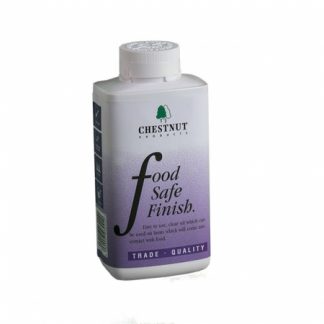 Food Safe Finish is a clear, food grade mineral oil. Chestnut use a thin grade of oil to allow it to soak into bare timber which then protects it against water splashes etc whilst not tainting or affecting the food in any way. It dries to a fairly matt finish; it is however ideal to use for wet sanding and when used with a very fine abrasive it can give an exceptionally smooth surface which has its own gentle glow. Apply with a clean cloth or brush direct onto bare wood, up to three coats are recommended. If the oil sits on the surface and won’t soak in it means the timber has absorbed as much as it can and no further coats are needed. Any surplus can be removed with a clean cloth if required. Depending on the way the item is used it might be necessary to top-up the finish, especially if it is washed regularly.
Food Safe Finish is a clear, food grade mineral oil. Chestnut use a thin grade of oil to allow it to soak into bare timber which then protects it against water splashes etc whilst not tainting or affecting the food in any way. It dries to a fairly matt finish; it is however ideal to use for wet sanding and when used with a very fine abrasive it can give an exceptionally smooth surface which has its own gentle glow. Apply with a clean cloth or brush direct onto bare wood, up to three coats are recommended. If the oil sits on the surface and won’t soak in it means the timber has absorbed as much as it can and no further coats are needed. Any surplus can be removed with a clean cloth if required. Depending on the way the item is used it might be necessary to top-up the finish, especially if it is washed regularly.
-

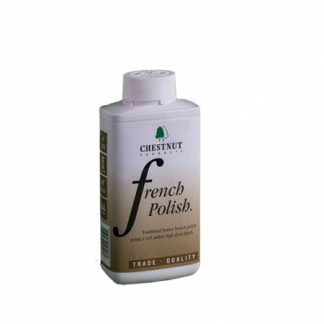 Confusingly, French Polish refers to a range of polishes (which would include Button Polish, White Polish, Garnet Polish etc) and also to a specific polish, French Polish. Chestnuts' French Polish is a traditional blend of solvent (methylated spirit) and a top quality unbleached shellac which is very similar to a Button Polish in colour. Applied either to bare timber or over a Shellac Sanding Sealer it is built up in many layers which have been described as being the thickness of a cigarette paper! French Polish gives the rich amber glow found on fine antique furniture and requires a very specific technique for application that is time consuming and laborious, but the final effect has to be seen to be believed and the satisfaction of achieving it is its own reward. A French Polish finish is not very hard wearing and is recommended for items that are going to be cared for.
Confusingly, French Polish refers to a range of polishes (which would include Button Polish, White Polish, Garnet Polish etc) and also to a specific polish, French Polish. Chestnuts' French Polish is a traditional blend of solvent (methylated spirit) and a top quality unbleached shellac which is very similar to a Button Polish in colour. Applied either to bare timber or over a Shellac Sanding Sealer it is built up in many layers which have been described as being the thickness of a cigarette paper! French Polish gives the rich amber glow found on fine antique furniture and requires a very specific technique for application that is time consuming and laborious, but the final effect has to be seen to be believed and the satisfaction of achieving it is its own reward. A French Polish finish is not very hard wearing and is recommended for items that are going to be cared for.
-

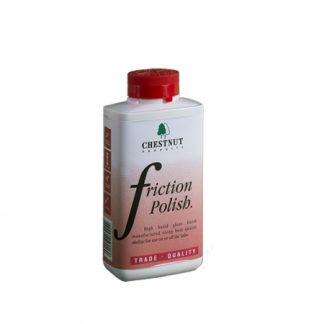 Friction Polish is a shellac based polish ideal for creating a high gloss finish on or off the lathe. It’s a great decorative finish and is ideal for small items but can be difficult to apply to larger items on the lathe (over about 8 inch diameter). The high amount of shellac in Friction Polish does two main things. Firstly it helps seal bare wood and give it a great shine, which is good. Sadly the price of this commodity shot up a few years ago when the shellac crop failed and it never went back down, meaning that the cost of the polish has also risen sharply. Nevertheless, Friction Polish remains one of the most popular finishes for turners. It can be applied to bare wood but is normally used over a sealer and any of the sealers in the Chestnut Products range are suitable for this. Applied with the lathe running it dries almost instantly and builds to a deep, rich shine very quickly. Avoid using too much as this can cause ‘rings’ to appear on the surface. Friction Polish can be applied off the lathe with great success, using it like a French Polish and rubbing it into the surface. This does require a large amount of elbow grease (sadly not something we supply) but the end result is well worth the effort!
Friction Polish is a shellac based polish ideal for creating a high gloss finish on or off the lathe. It’s a great decorative finish and is ideal for small items but can be difficult to apply to larger items on the lathe (over about 8 inch diameter). The high amount of shellac in Friction Polish does two main things. Firstly it helps seal bare wood and give it a great shine, which is good. Sadly the price of this commodity shot up a few years ago when the shellac crop failed and it never went back down, meaning that the cost of the polish has also risen sharply. Nevertheless, Friction Polish remains one of the most popular finishes for turners. It can be applied to bare wood but is normally used over a sealer and any of the sealers in the Chestnut Products range are suitable for this. Applied with the lathe running it dries almost instantly and builds to a deep, rich shine very quickly. Avoid using too much as this can cause ‘rings’ to appear on the surface. Friction Polish can be applied off the lathe with great success, using it like a French Polish and rubbing it into the surface. This does require a large amount of elbow grease (sadly not something we supply) but the end result is well worth the effort!
-

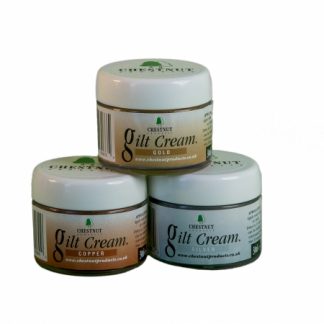 Gilt Creams are a creamy, waxy paste with metallic flakes and pigments in them, giving a rich, lustrous finish to whatever they are applied to. The can be used for a ‘limed’ effect over a lacquer to give a high contrast effect, or uniformly over a piece and polished to a bright shine once dried. Available in
Gilt Creams are a creamy, waxy paste with metallic flakes and pigments in them, giving a rich, lustrous finish to whatever they are applied to. The can be used for a ‘limed’ effect over a lacquer to give a high contrast effect, or uniformly over a piece and polished to a bright shine once dried. Available in- Gold
- Silver
- Copper

-

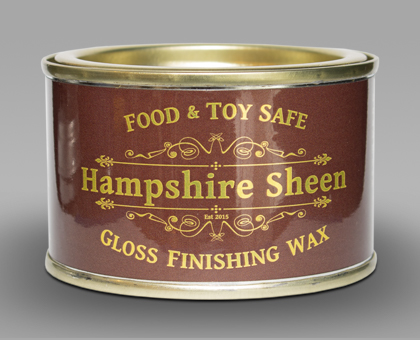 As the name suggests, the High Gloss variation brings a higher shine to your decorative woodwork . It is tough, with an additional 'Pow' of shine that suits some lathe projects. Contains a high quantity of carnauba and microcrystalline waxes. Shiny, tough and exceptionally long lasting. Food and toy safe, too. Supplied in 130g tins.
As the name suggests, the High Gloss variation brings a higher shine to your decorative woodwork . It is tough, with an additional 'Pow' of shine that suits some lathe projects. Contains a high quantity of carnauba and microcrystalline waxes. Shiny, tough and exceptionally long lasting. Food and toy safe, too. Supplied in 130g tins. -

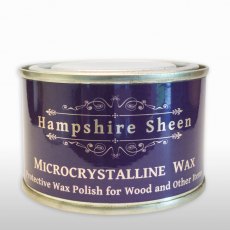 Quick drying Microcrystalline Wax is an ideal protective finish for many different projects and has many uses besides wood. Both Fingerprint and water resistant, Microcrystalline Wax is a hard wearing overcoat to wax and other finishes for an extra level of gloss and protection to your decorative wood items. Just a little of the product goes a very long way, so use it sparingly!
Quick drying Microcrystalline Wax is an ideal protective finish for many different projects and has many uses besides wood. Both Fingerprint and water resistant, Microcrystalline Wax is a hard wearing overcoat to wax and other finishes for an extra level of gloss and protection to your decorative wood items. Just a little of the product goes a very long way, so use it sparingly!

